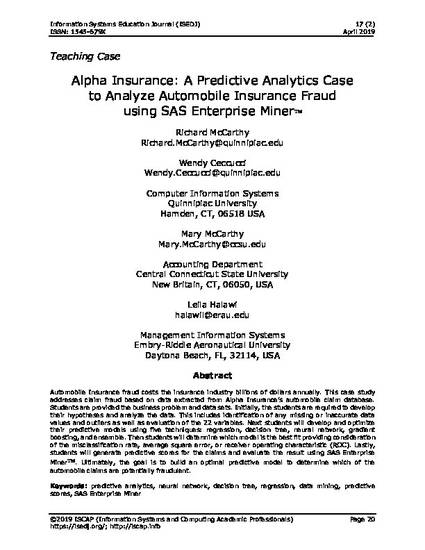
Automobile Insurance fraud costs the insurance industry billions of dollars annually. This case study addresses claim fraud based on data extracted from Alpha Insurance’s automobile claim database. Students are provided the business problem and data sets. Initially, the students are required to develop their hypotheses and analyze the data. This includes identification of any missing or inaccurate data values and outliers as well as evaluation of the 22 variables. Next students will develop and optimize their predictive models using five techniques: regression, decision tree, neural network, gradient boosting, and ensemble. Then students will determine which model is the best fit providing consideration of the misclassification rate, average square error, or receiver operating characteristic (ROC). Lastly, students will generate predictive scores for the claims and evaluate the result using SAS Enterprise Miner (TM). Ultimately, the goal is to build an optimal predictive model to determine which of the automobile claims are potentially fraudulent.
Available at: http://works.bepress.com/Leila-A-Halawi/101/

This article started as a presentation at the 2018 EDSIG Conference held in Norfolk, VA, in November 2018.